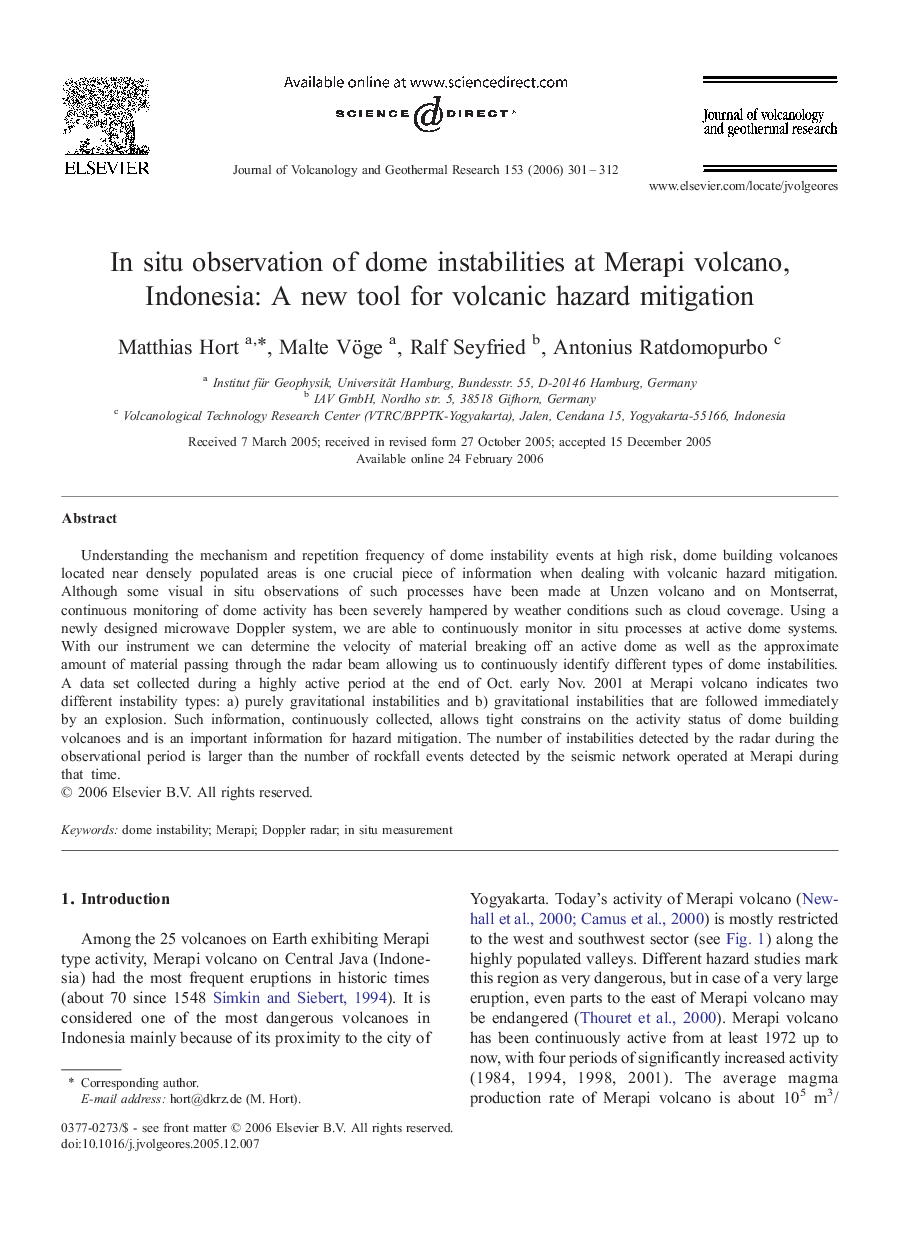| Article ID | Journal | Published Year | Pages | File Type |
|---|---|---|---|---|
| 4715399 | Journal of Volcanology and Geothermal Research | 2006 | 12 Pages |
Understanding the mechanism and repetition frequency of dome instability events at high risk, dome building volcanoes located near densely populated areas is one crucial piece of information when dealing with volcanic hazard mitigation. Although some visual in situ observations of such processes have been made at Unzen volcano and on Montserrat, continuous monitoring of dome activity has been severely hampered by weather conditions such as cloud coverage. Using a newly designed microwave Doppler system, we are able to continuously monitor in situ processes at active dome systems. With our instrument we can determine the velocity of material breaking off an active dome as well as the approximate amount of material passing through the radar beam allowing us to continuously identify different types of dome instabilities. A data set collected during a highly active period at the end of Oct. early Nov. 2001 at Merapi volcano indicates two different instability types: a) purely gravitational instabilities and b) gravitational instabilities that are followed immediately by an explosion. Such information, continuously collected, allows tight constrains on the activity status of dome building volcanoes and is an important information for hazard mitigation. The number of instabilities detected by the radar during the observational period is larger than the number of rockfall events detected by the seismic network operated at Merapi during that time.
